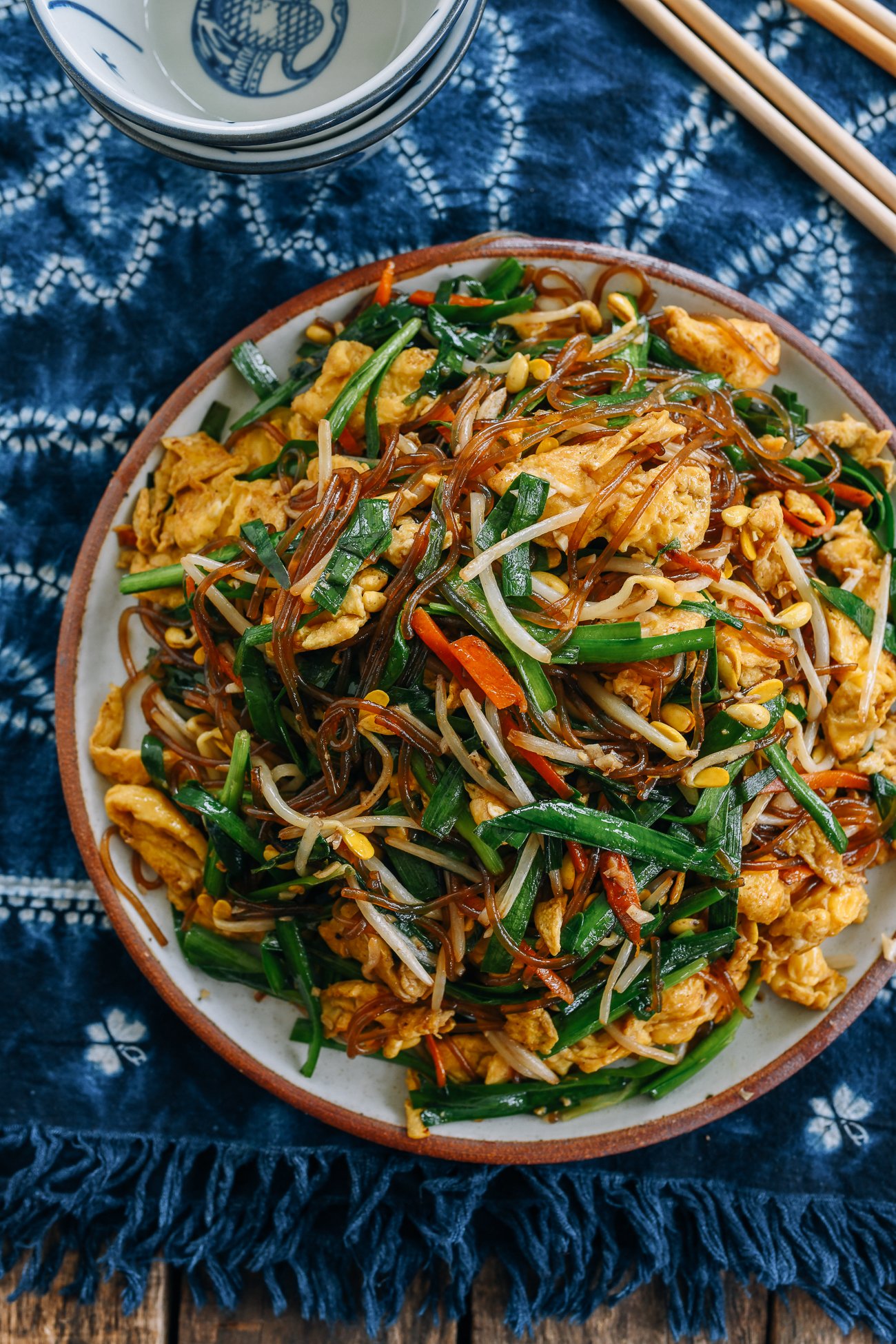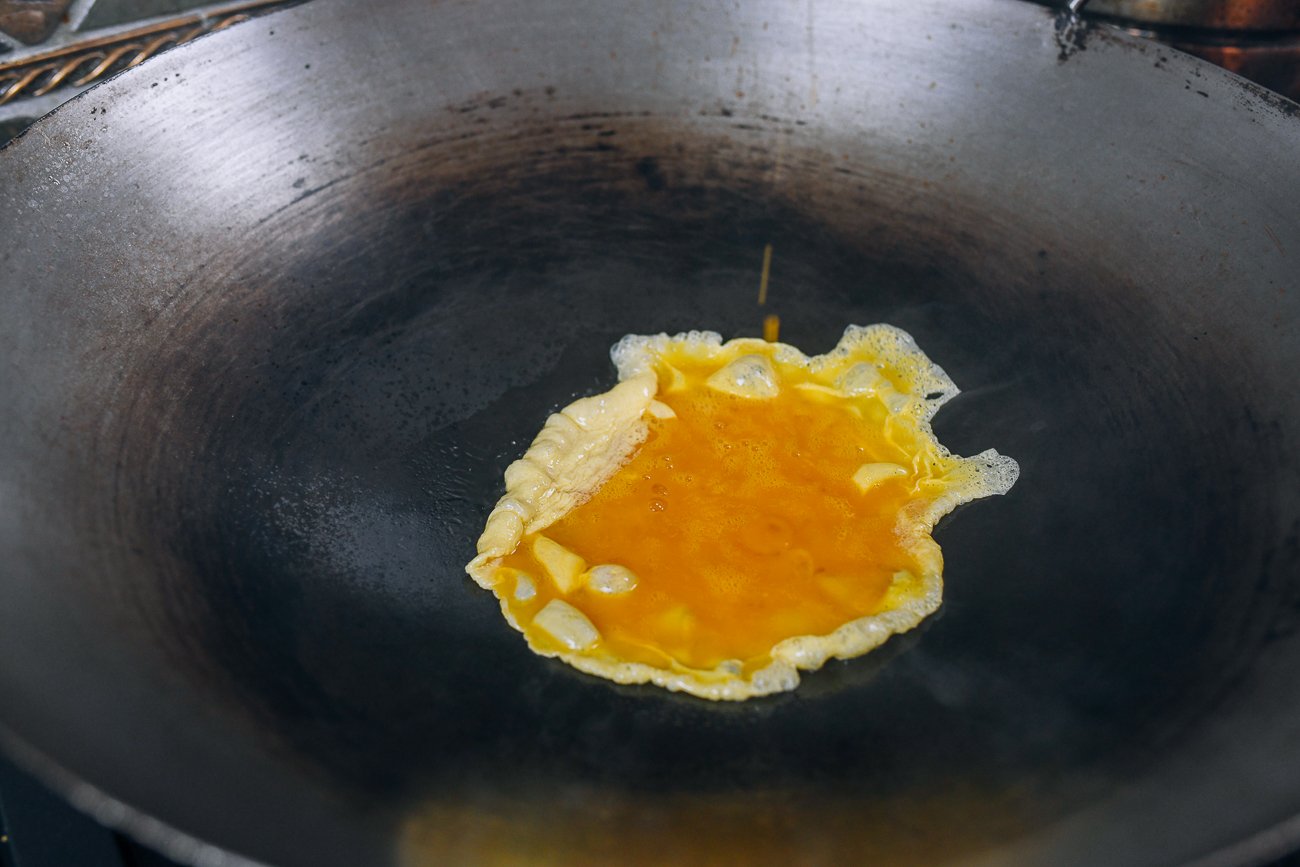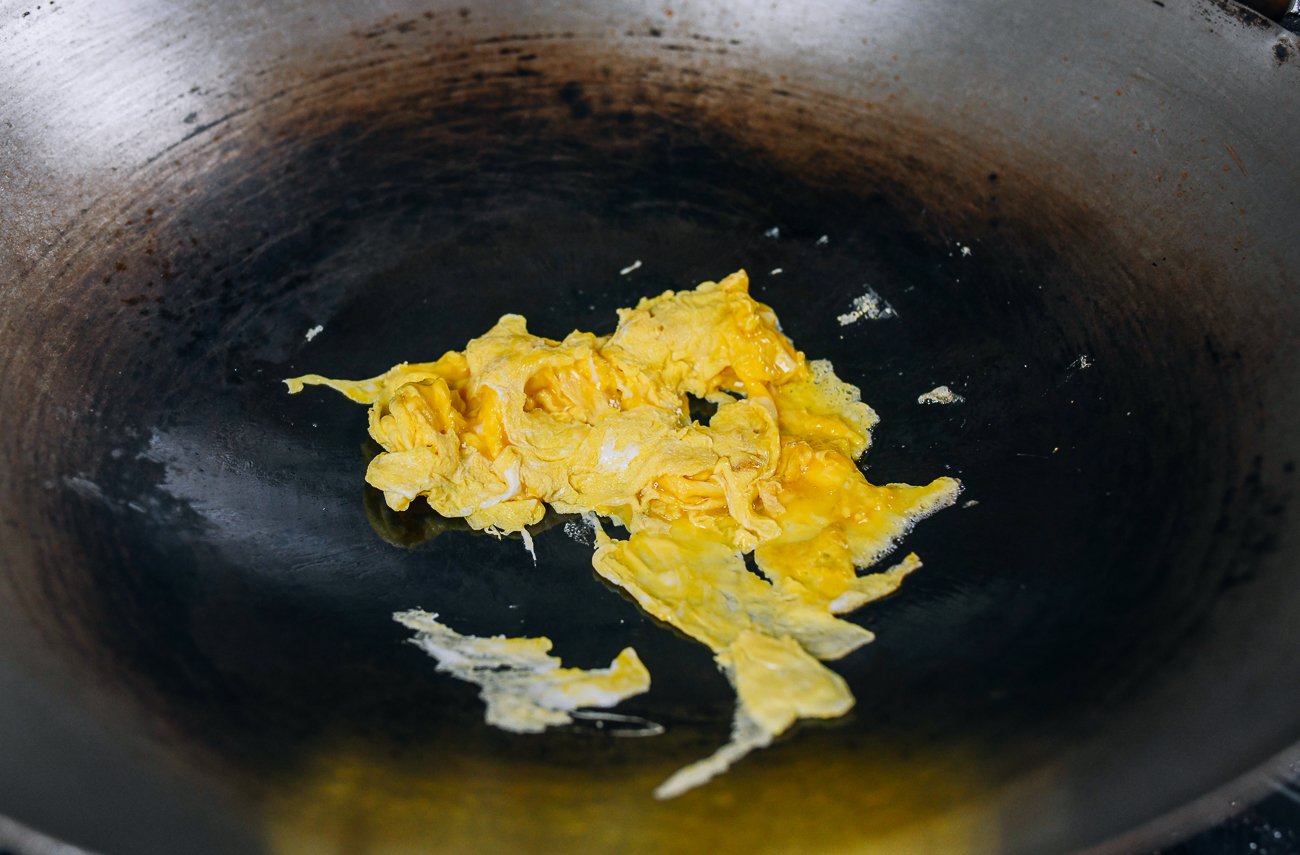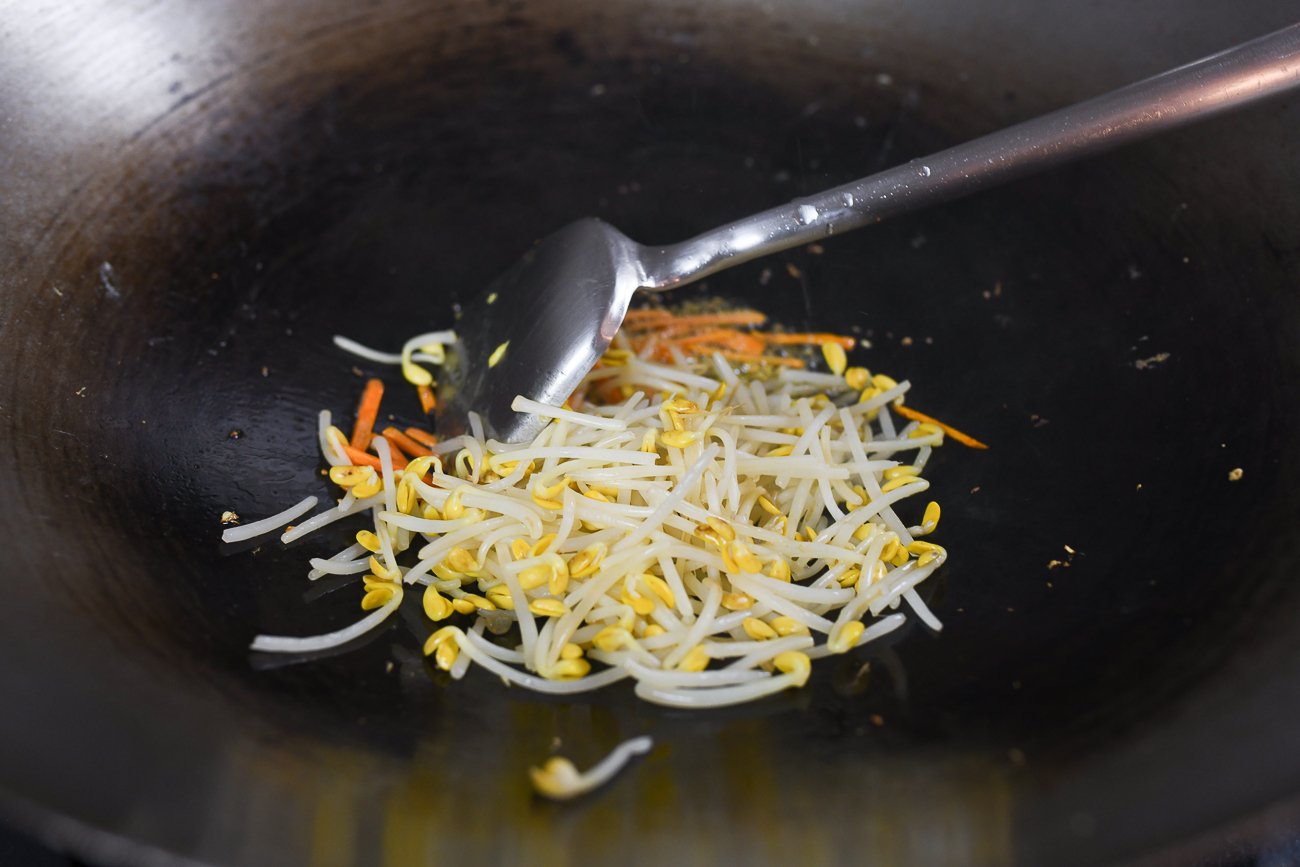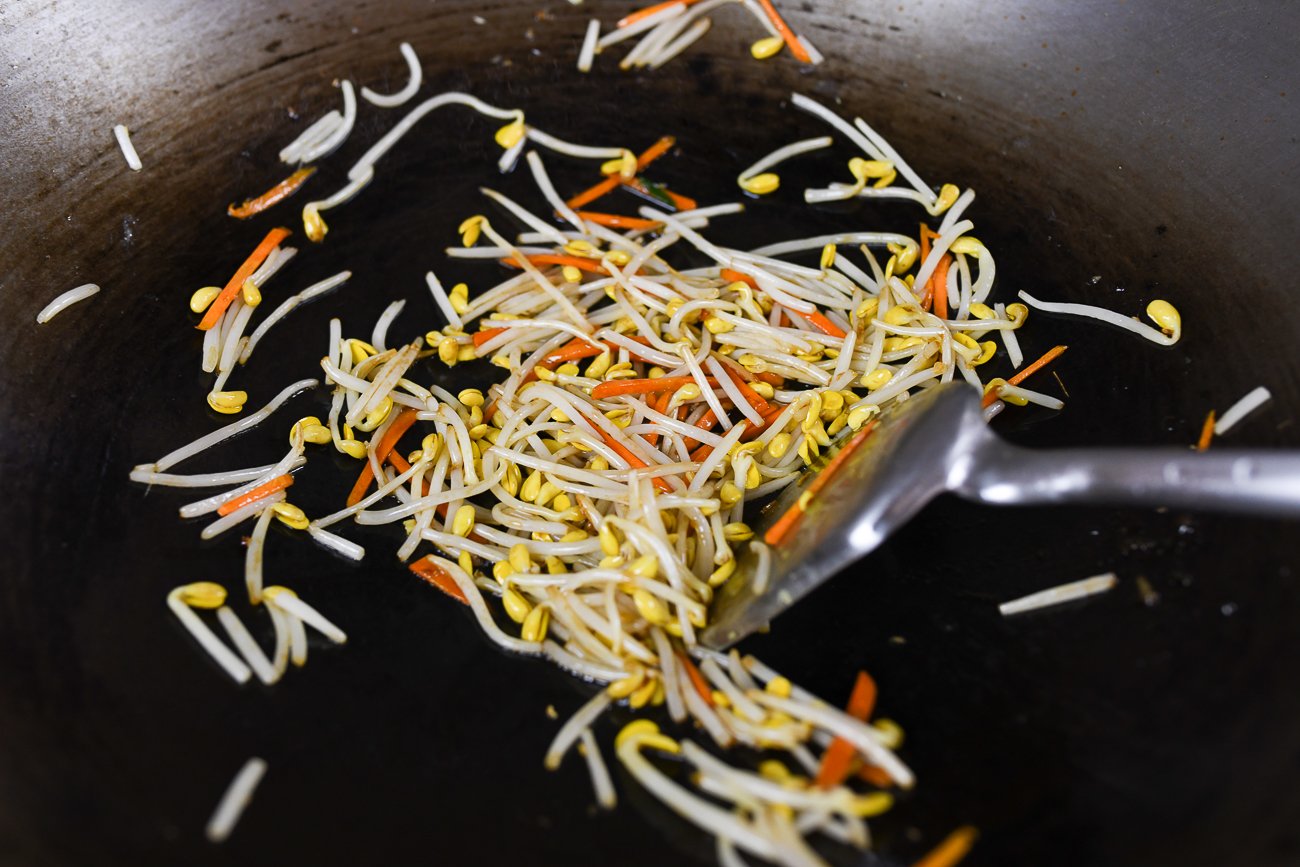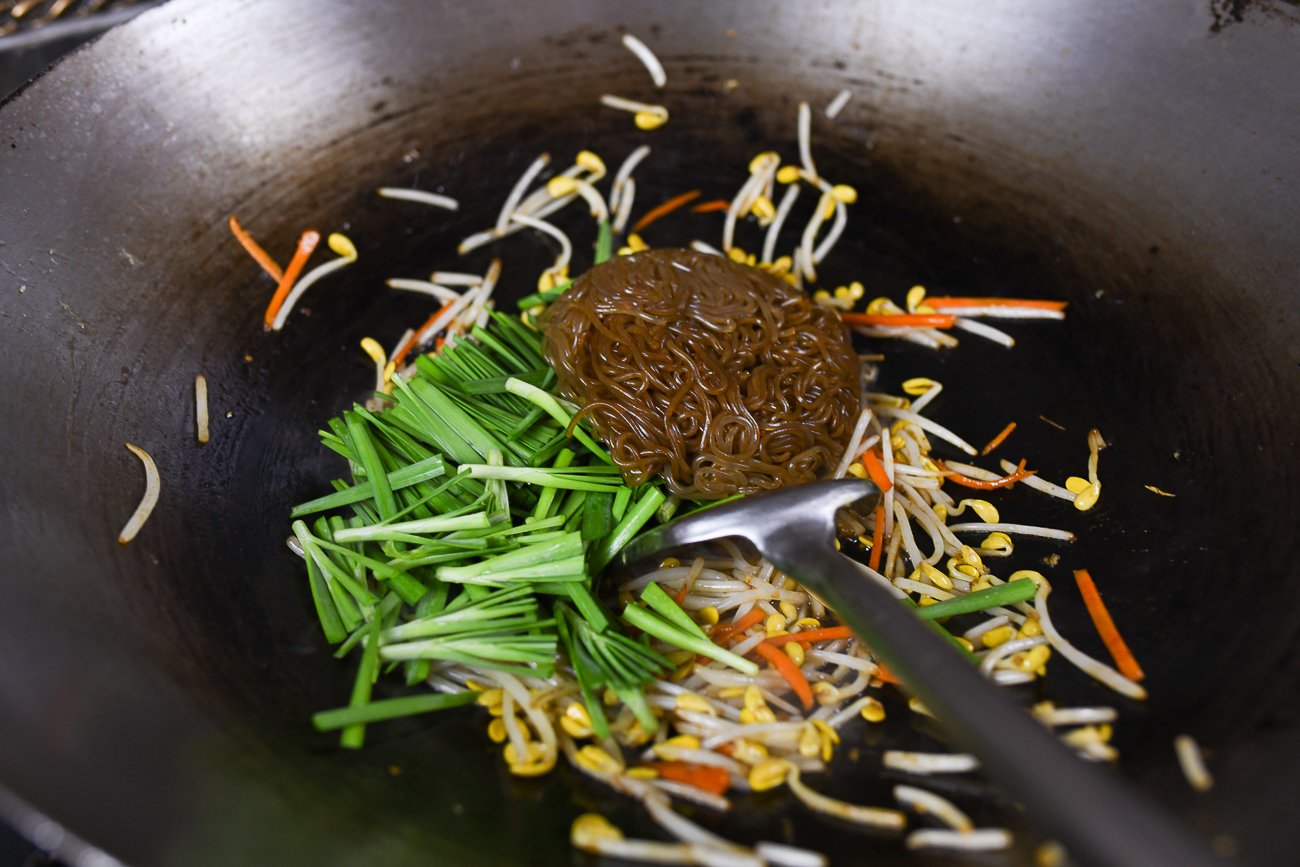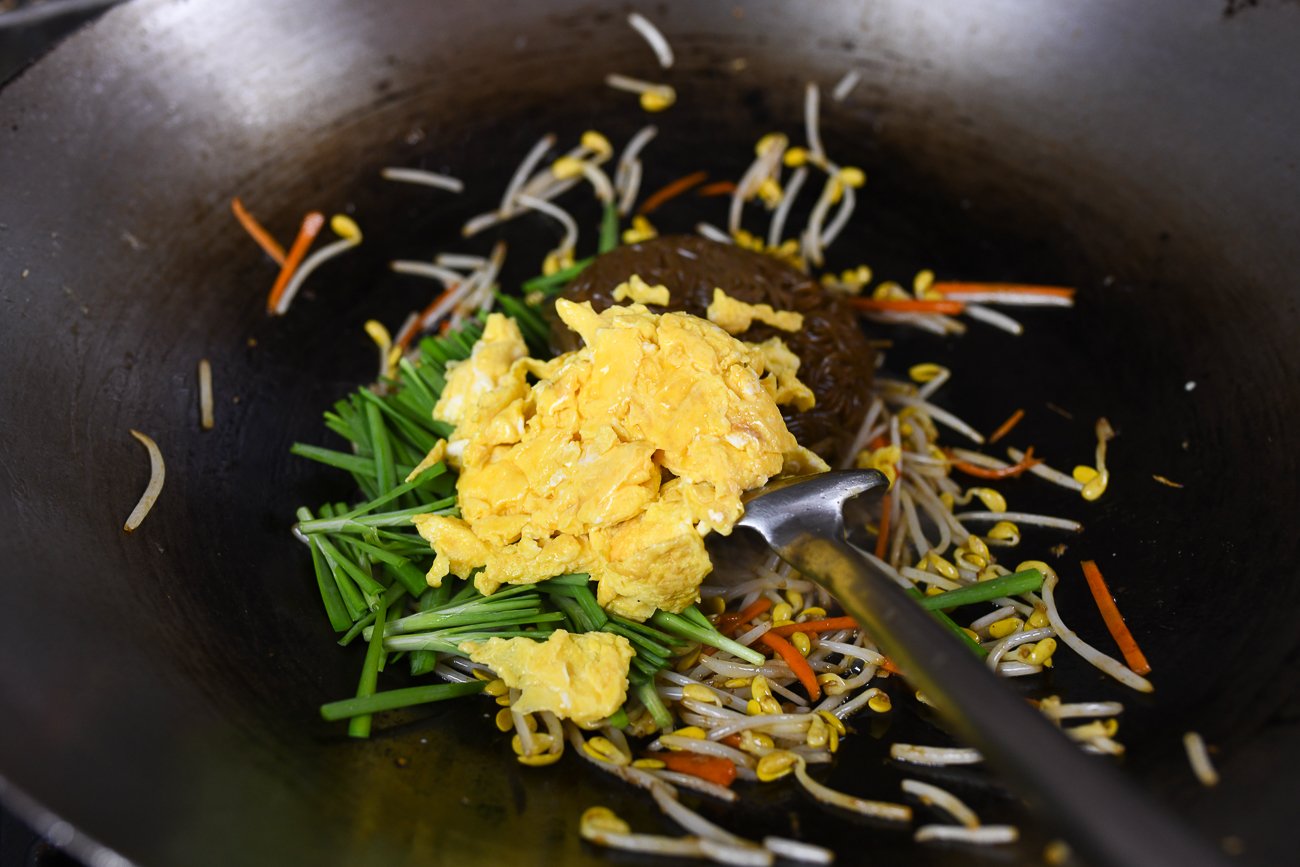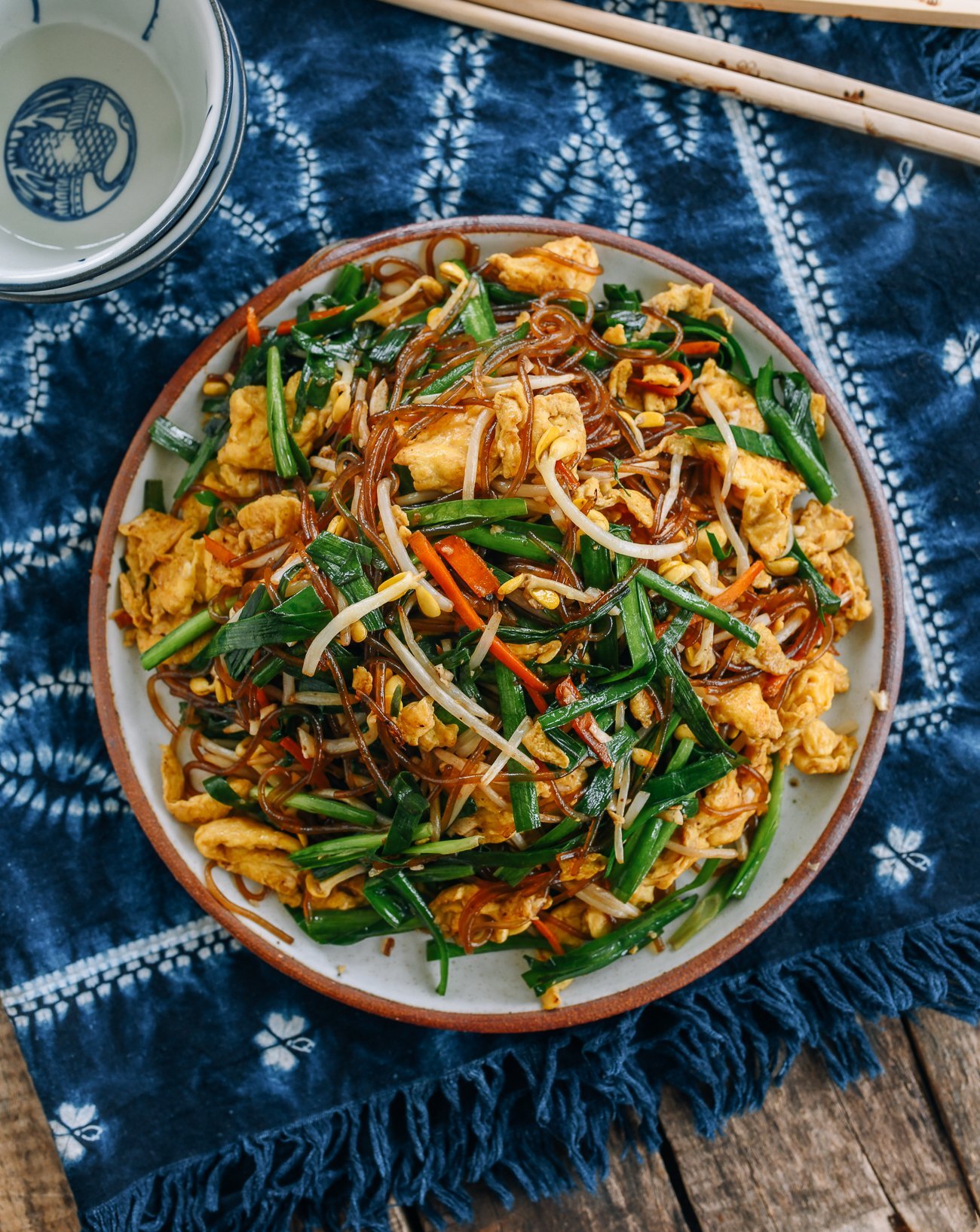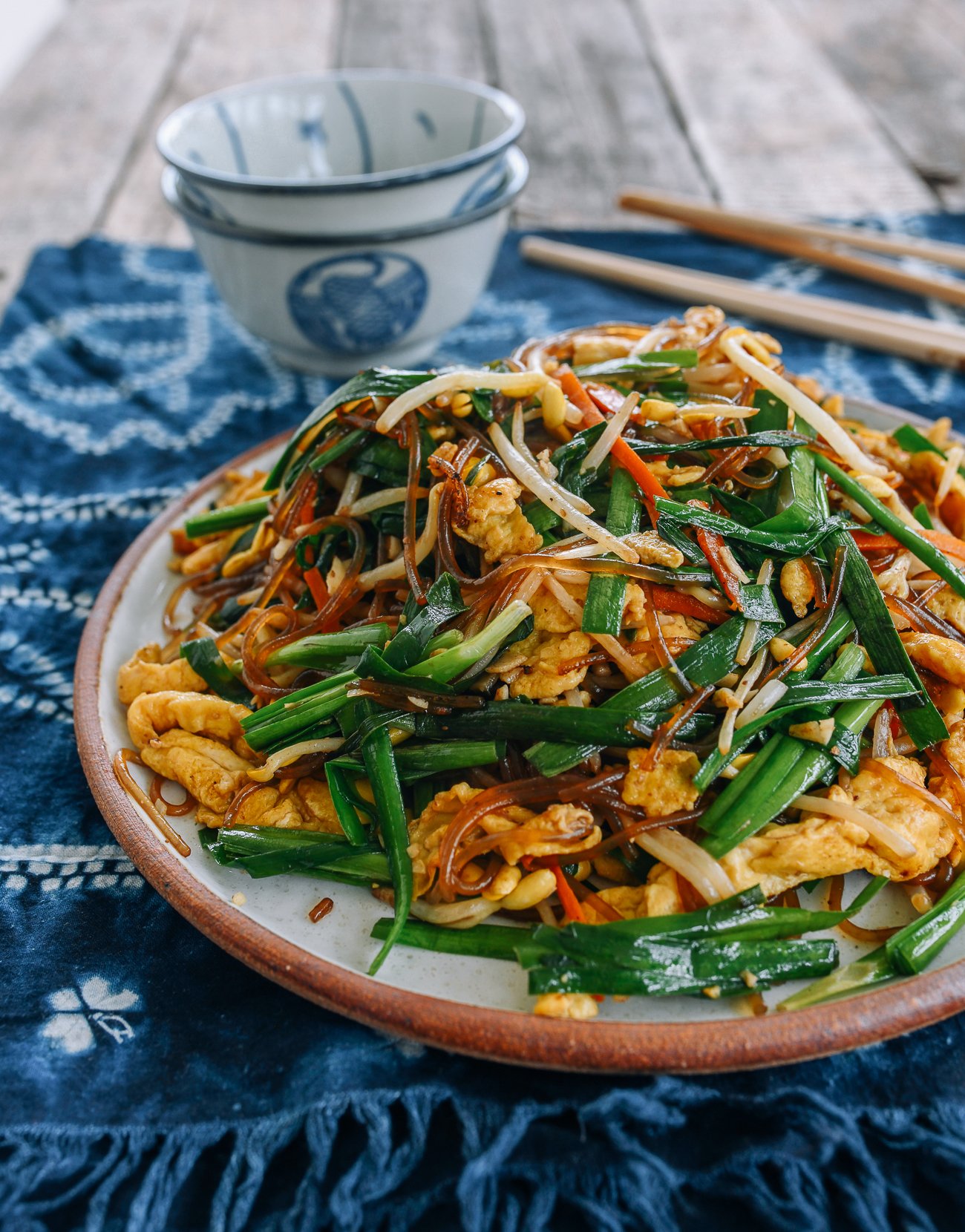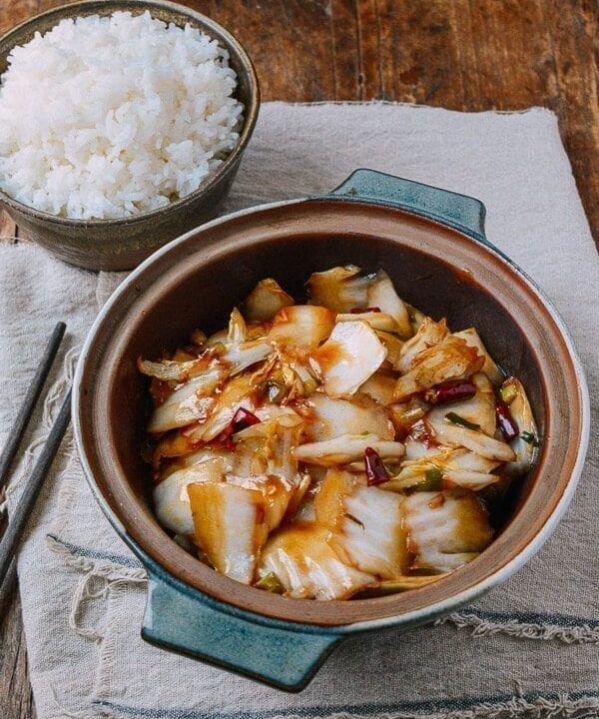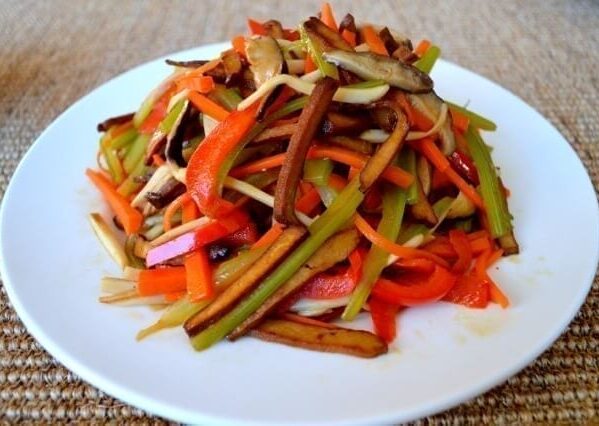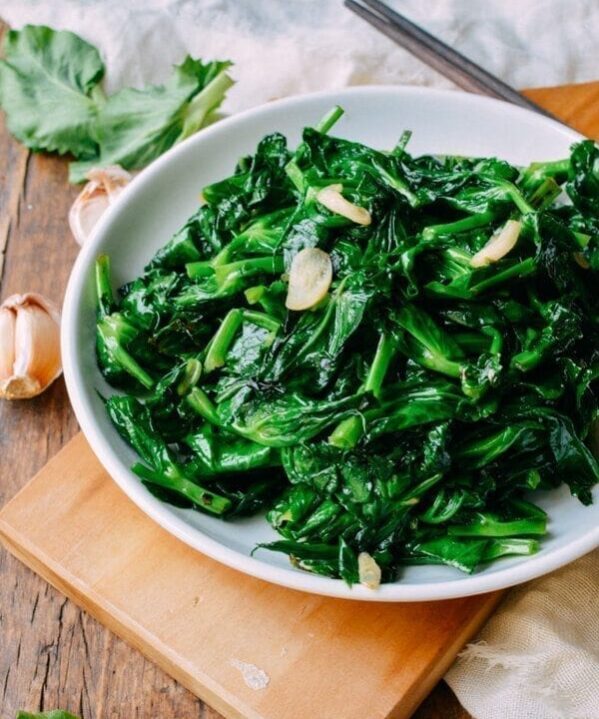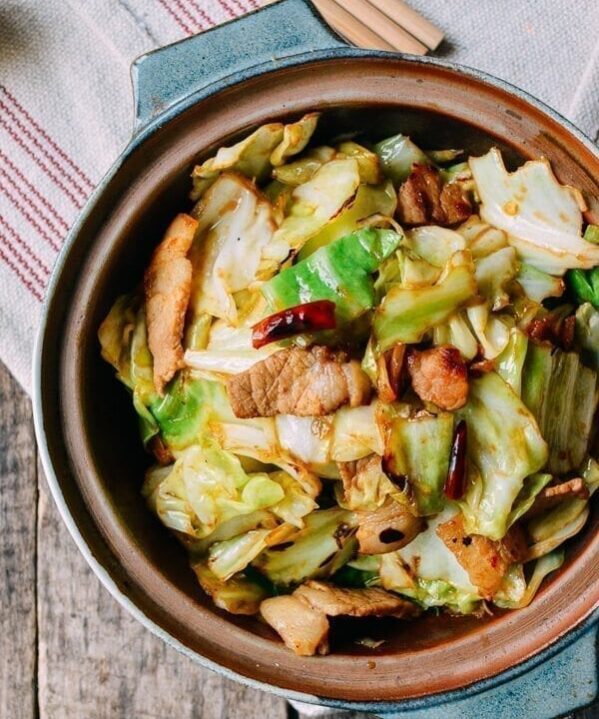Chao He Cai, a stir-fry of clear noodles, eggs, chives, carrots and bean sprouts, is Chinese home-cooked comfort food. Just like our tomato egg stir fry, it’s a modest dish.
While it’s not shouting from the rooftops like some showier recipes, it’s what one would whip up at home on the regular—not simply because it’s easy and wallet-friendly, but also because it’s incredibly tasty and satisfying.
The name hé cài translates to harmony stir-fry. Indeed, all the elements of this dish come together to create the perfect harmony.
A Springtime Dish
Garlic Chives are some of the first greens to turn up in our garden. This time of year, the chives are still tender, but growing fast enough that you can start to cut them back every few weeks for stir-fries or pork and chive dumplings!
During our three-year stint living in Beijing, we always ordered Chao He Cai while eating out at our favorite local restaurant, 太熟悉 (tài shúxī, which translates to “Too Familiar” in English).
The restaurant specializes in homestyle comfort food, and he cai was one of the most popular on their menu.
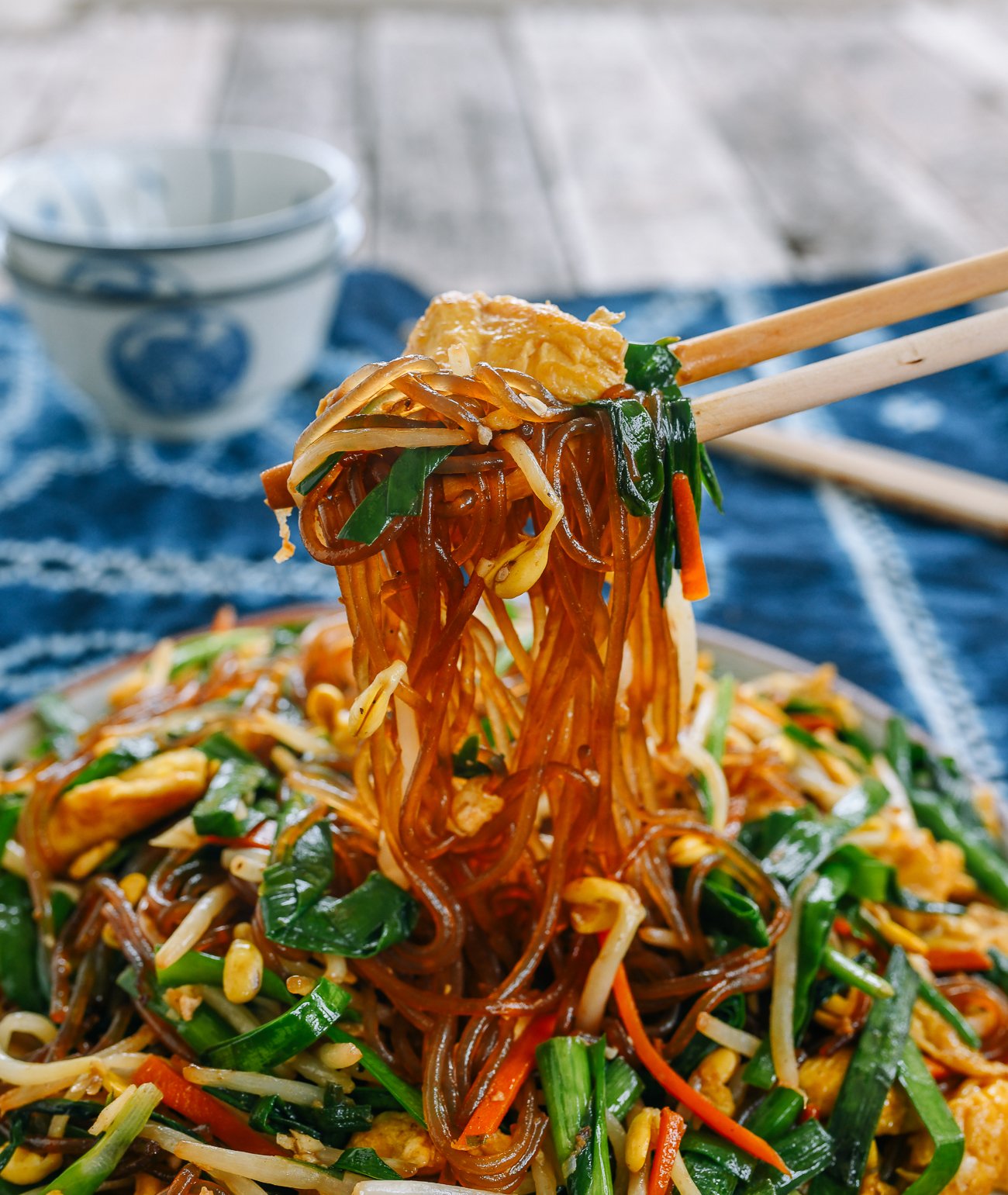
A Vegetarian All-in-One Recipe
With eggs, noodles, and veggies, this can be a complete meal all by itself. You could also serve it as a side dish, along with a green vegetable stir-fry and a cucumber salad to make a varied, light meal.
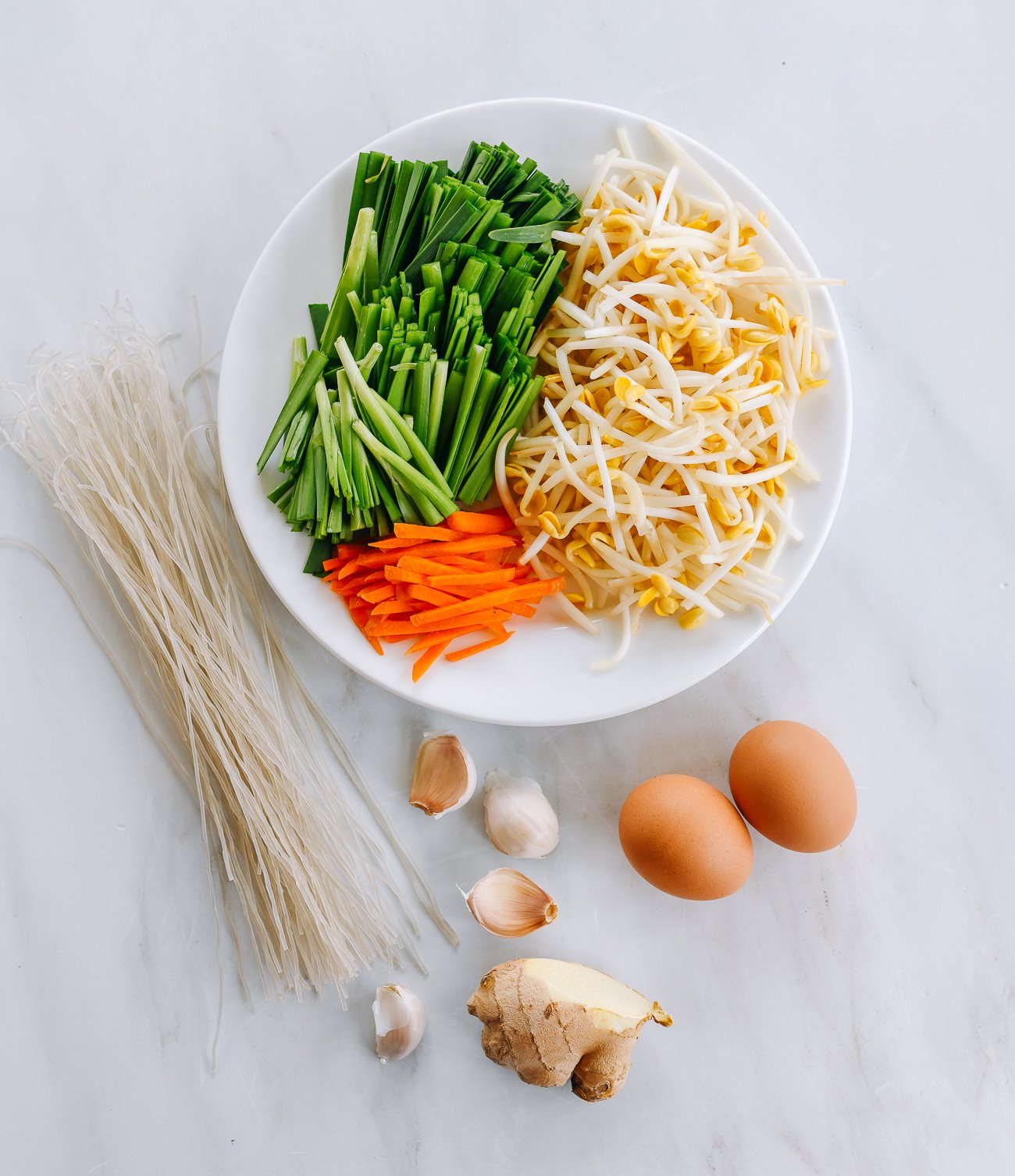
We would actually eat our he cai with rice, which may seem unusual, considering there are noodles in the dish. You can choose to serve it with or without rice!
If you like this dish, be sure to check out our cabbage version: Cabbage and Glass Noodle Stir Fry (i.e., the fall/winter version of this recipe).
Tip: Mix & Match Vegetables!
Aside from bean sprouts, carrots, and chives, you can add other vegetables like spinach, celery, peppers, onions, zucchini, mushrooms, etc. This is a great dish for using up those leftover vegetables that you have in the refrigerator—before they go bad!
Recipe Instructions
Cook the sweet potato noodles according to the package instructions. I cooked my noodles in boiling water for 7 minutes.
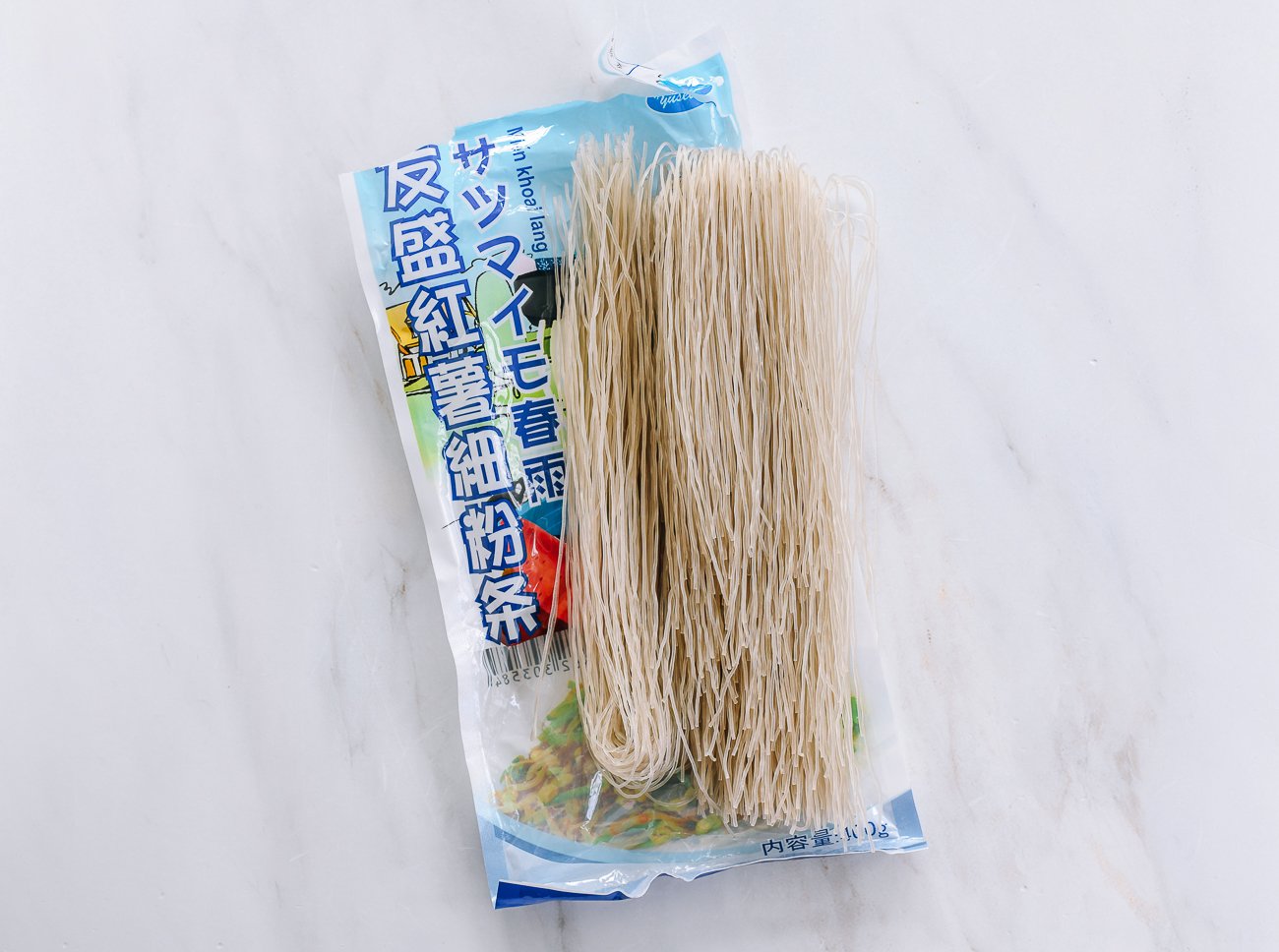
Lift the noodles out of the water (you will need this water again if using soybean sprouts), and transfer them to a medium bowl. Add the dark soy sauce, sesame oil, and water. Mix and set aside.
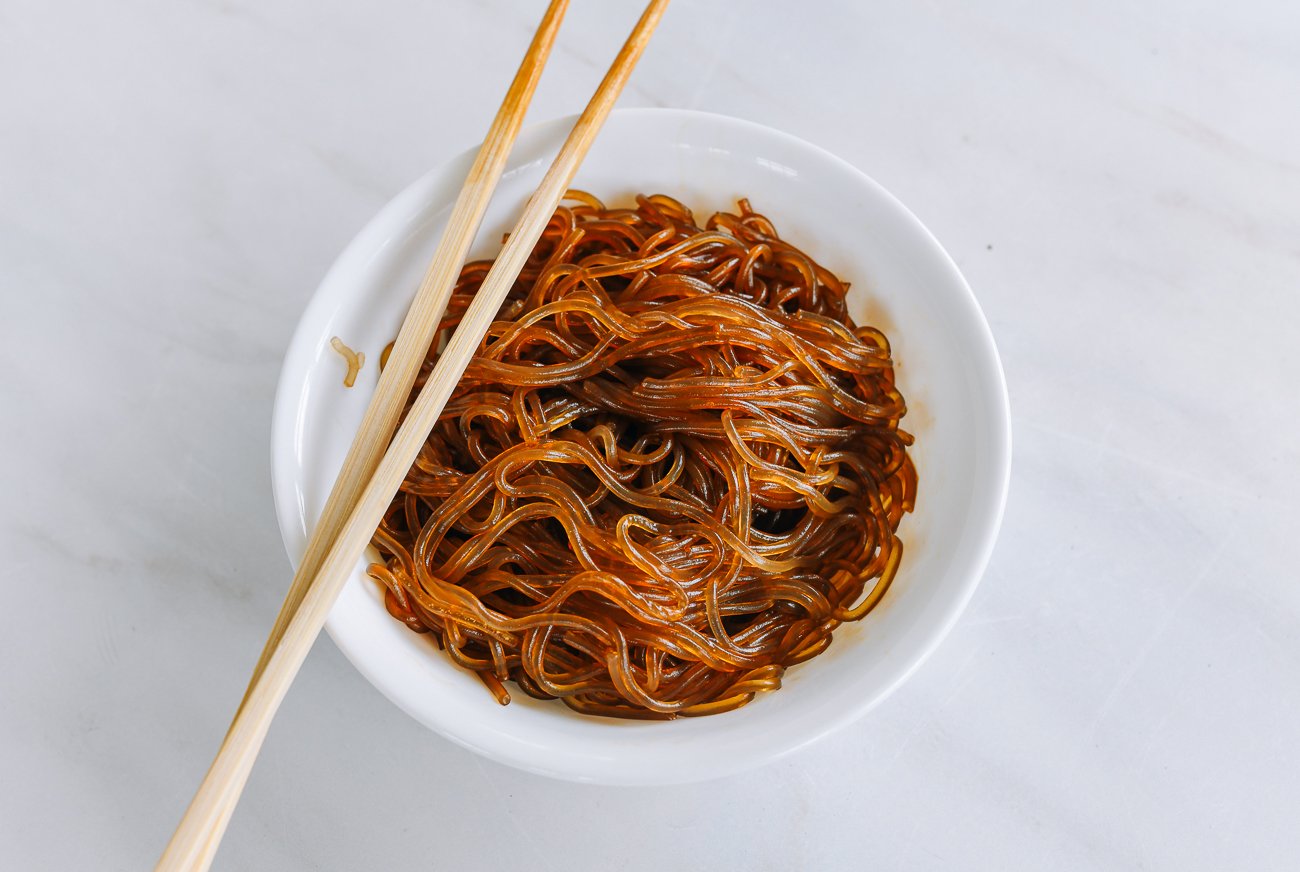
If you are using soybean sprouts like I did, bring the cooked noodle water back up to a boil, and blanch the soybean sprouts for 1 minute. Drain and set aside. (Skip this step if you are using mung bean sprouts, as they cook much faster.)
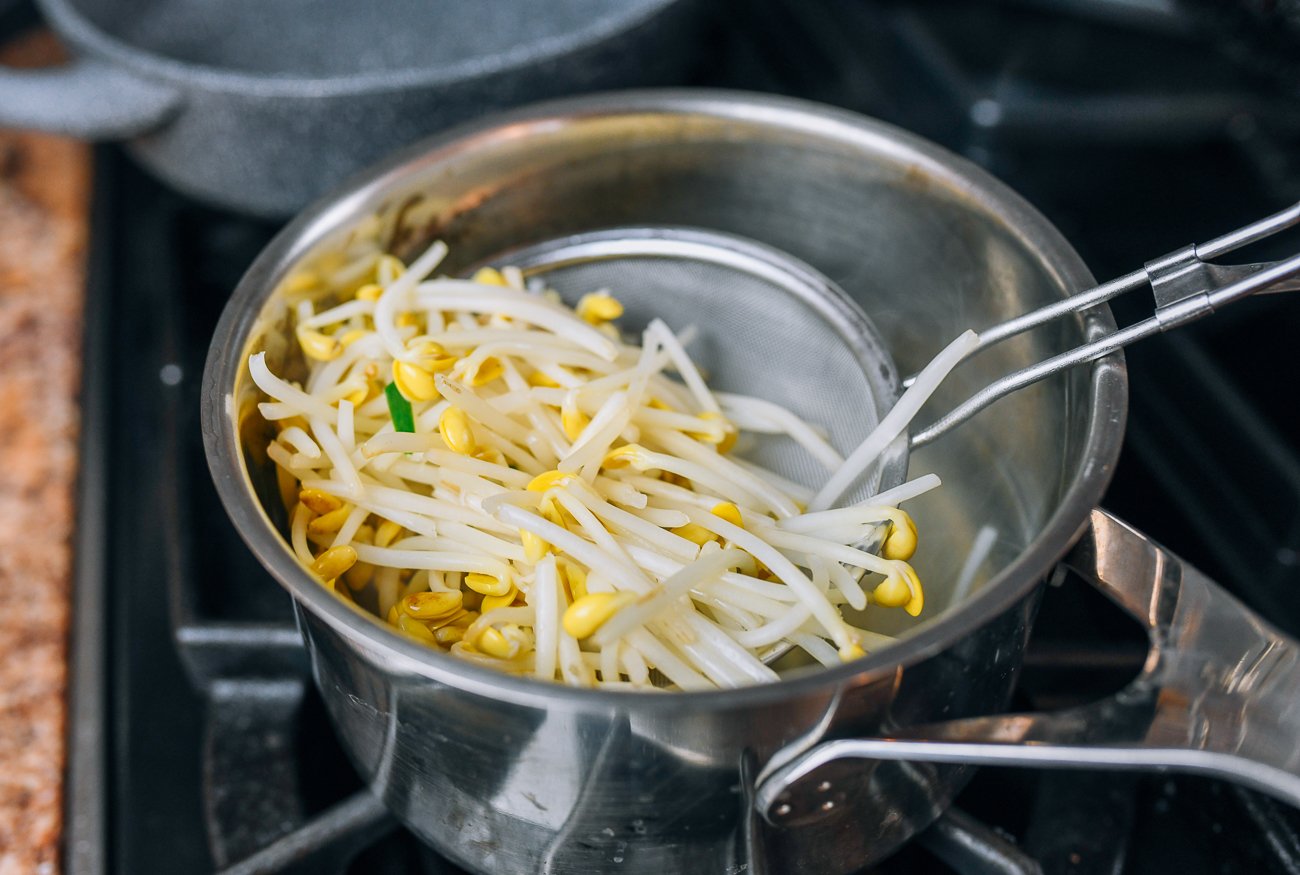
In a bowl, beat the eggs along with the Shaoxing wine and salt.
Preheat your wok over medium-high heat until it starts to smoke lightly. Add 2 tablespoons (half) of the oil to coat the bottom of the wok, and reduce the heat to medium low. Add the eggs and cook until they’re lightly scrambled but still a little runny. Remove the eggs from the wok and set aside.
Add the remaining oil to the wok over medium heat, and cook the ginger and carrot for about 1 minute.
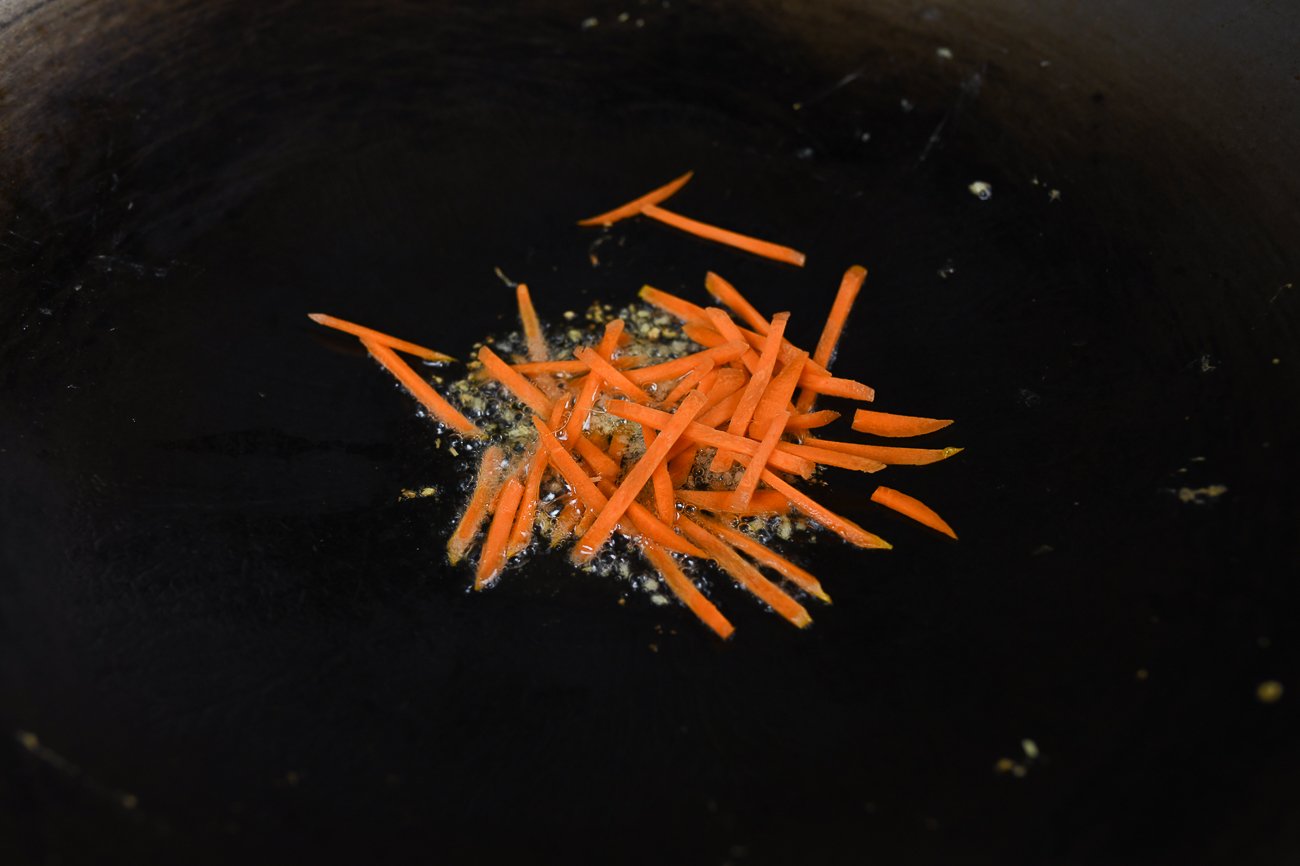
Then add half of the minced garlic along with the bean sprouts. Turn up the heat to medium-high and stir to mix everything well.
Reduce the heat to low while you add the oyster sauce, light soy sauce, sugar, black vinegar, and Sichuan peppercorn powder (or white pepper). Increase the heat to high and stir-fry until the ingredients are evenly mixed in.
Add the chives, cooked noodles, and cooked eggs, and stir-fry until the ingredients are evenly incorporated.
At this point, if the contents of the wok look dry, add a couple tablespoons of water to loosen the noodles and to prevent them from sticking.
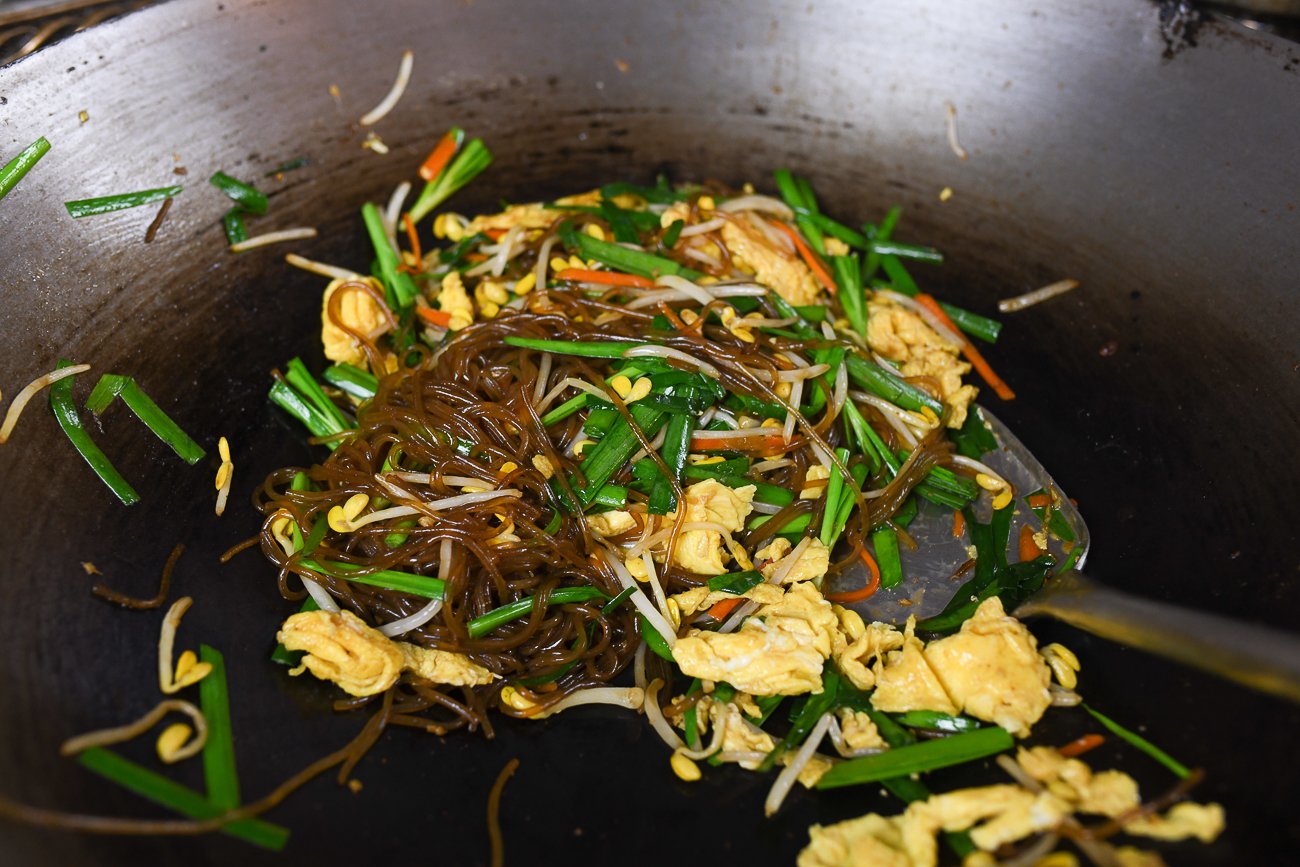
Add the rest of the minced garlic and salt to taste.
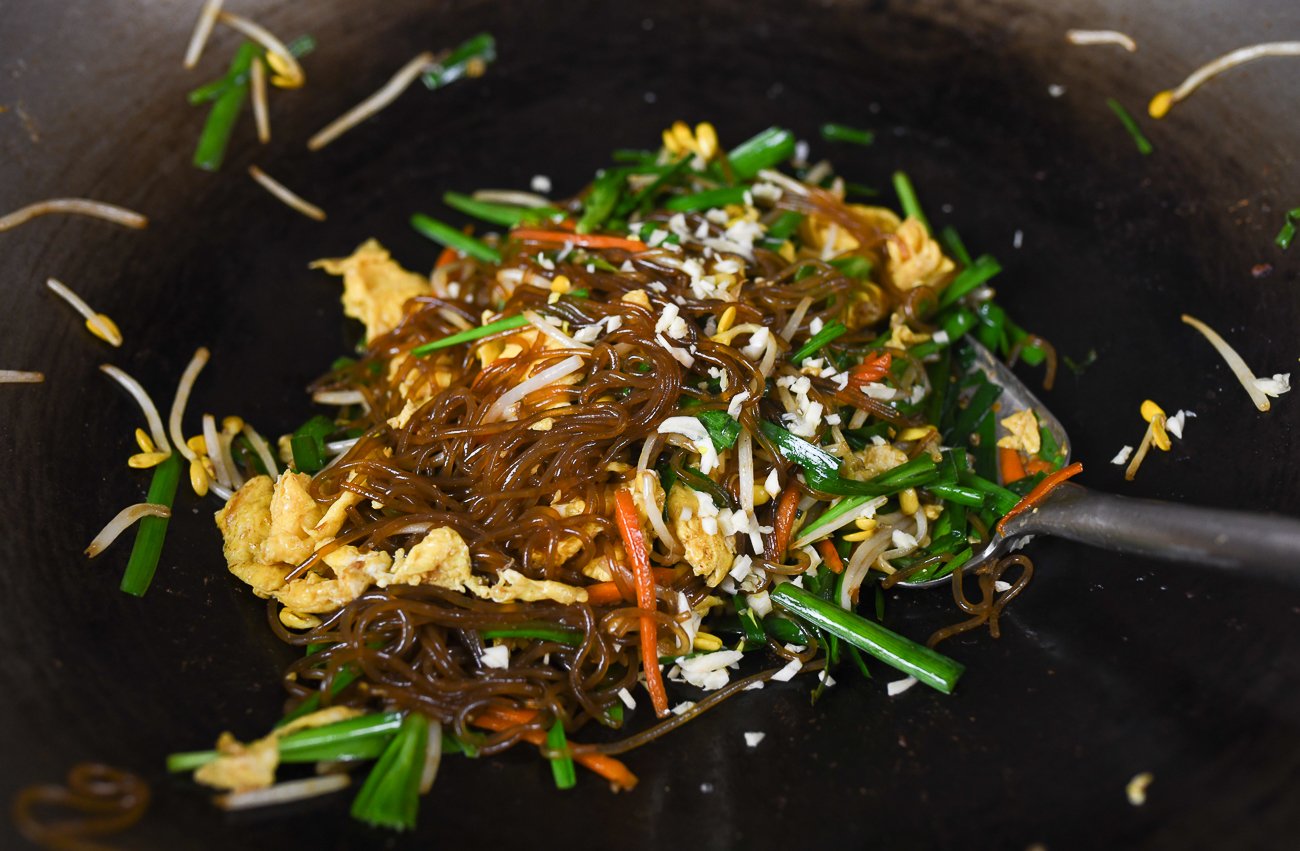
Stir-fry until the chives are wilted. The dish should have a nice saucy sheen, without any standing sauce. Serve and enjoy this harmony stir-fry!
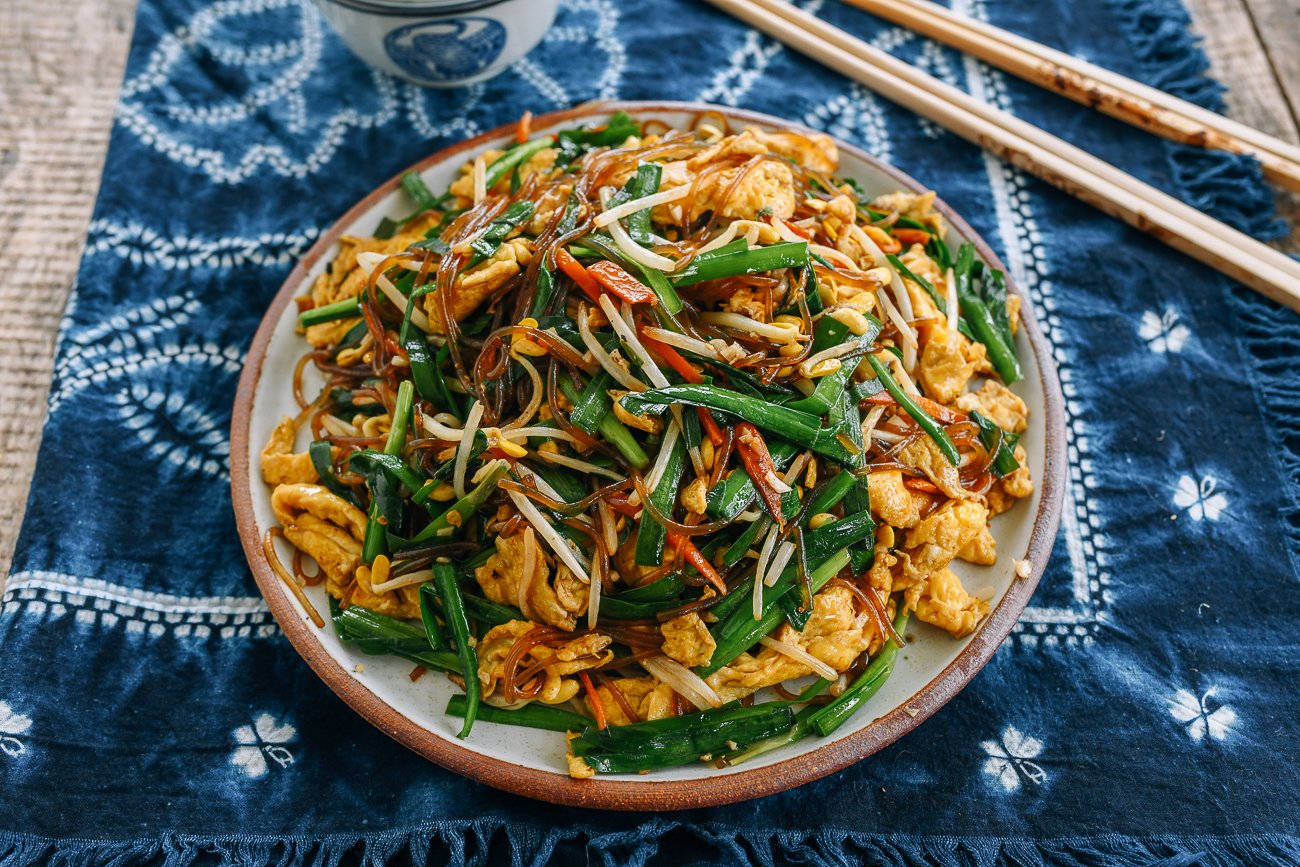
Chao He Cai – 炒合菜 (Harmony Stir-fry)
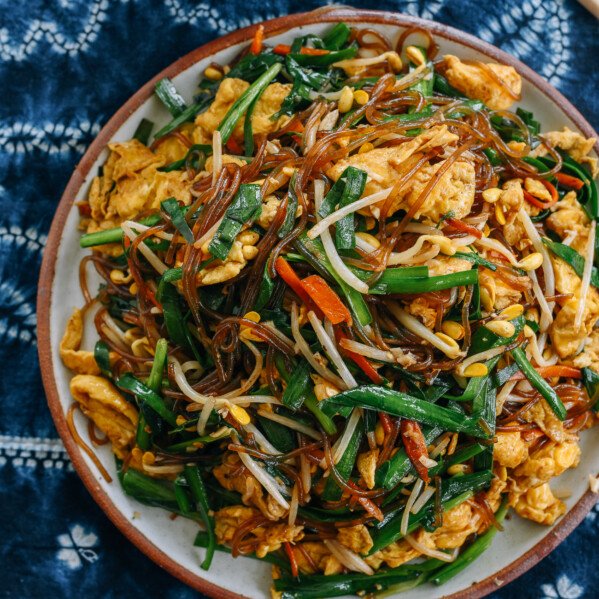
Ingredients
For the noodles:
- 3 ounces dried sweet potato noodles
- 1 teaspoon dark soy sauce
- 1/2 teaspoon sesame oil
- 2 tablespoons water
For the rest of the dish:
- 6 ounces bean sprouts (mung bean or soybean sprouts)
- 3 large eggs
- 1 teaspoon Shaoxing wine
- 1/4 teaspoon salt
- 4 tablespoons oil (any neutral oil)
- 1 teaspoon ginger (minced)
- 1 cup carrots (julienned)
- 4 cloves garlic (minced; divided)
- 1 tablespoon oyster sauce
- 1/2 tablespoon light soy sauce
- 1/2 teaspoon sugar
- 1/2 teaspoon Chinese black vinegar
- 1/4 teaspoon Sichuan peppercorn powder (or white pepper)
- 4 ounces garlic chives (cut into 2-inch/5cm pieces)
- 2 tablespoons water (optional; if needed)
- salt (to taste)
Instructions
- Cook the sweet potato noodles according to the package instructions. I cooked my noodles in boiling water for 7 minutes. Lift the noodles out of the water (you will need this water again if using soybean sprouts), and transfer them to a medium bowl. Add the dark soy sauce, sesame oil, and water. Mix and set aside.
- If you are using soybean sprouts like I did, bring the cooked noodle water back up to a boil, and blanch the soybean sprouts for 1 minute. Drain and set aside. (Skip this step if you are using mung bean sprouts, as they cook much faster.)
- In a bowl, beat the eggs along with the Shaoxing wine and salt.
- Preheat your wok over medium-high heat until it starts to smoke lightly. Add 2 tablespoons (half) of the oil to coat the bottom of the wok, and reduce the heat to medium low. Add the eggs and cook until they’re lightly scrambled but still a little runny. Remove the eggs from the wok and set aside.
- Add the remaining oil to the wok over medium heat, and cook the ginger and carrot for about 1 minute. Then add half of the minced garlic along with the bean sprouts. Turn up the heat to medium-high and stir to mix everything well.
- Reduce the heat to low while you add the oyster sauce, light soy sauce, sugar, black vinegar, and Sichuan peppercorn powder (or white pepper). Increase the heat to high and stir-fry until the ingredients are evenly mixed in.
- Add the chives, cooked noodles, and cooked eggs, and stir-fry until the ingredients are evenly incorporated. At this point, if the contents of the wok look dry, add a couple tablespoons of water to loosen the noodles and to prevent them from sticking.
- Add the rest of the minced garlic and salt to taste. Stir-fry until the chives are wilted. The dish should have a nice saucy sheen, without any standing sauce. Serve.
